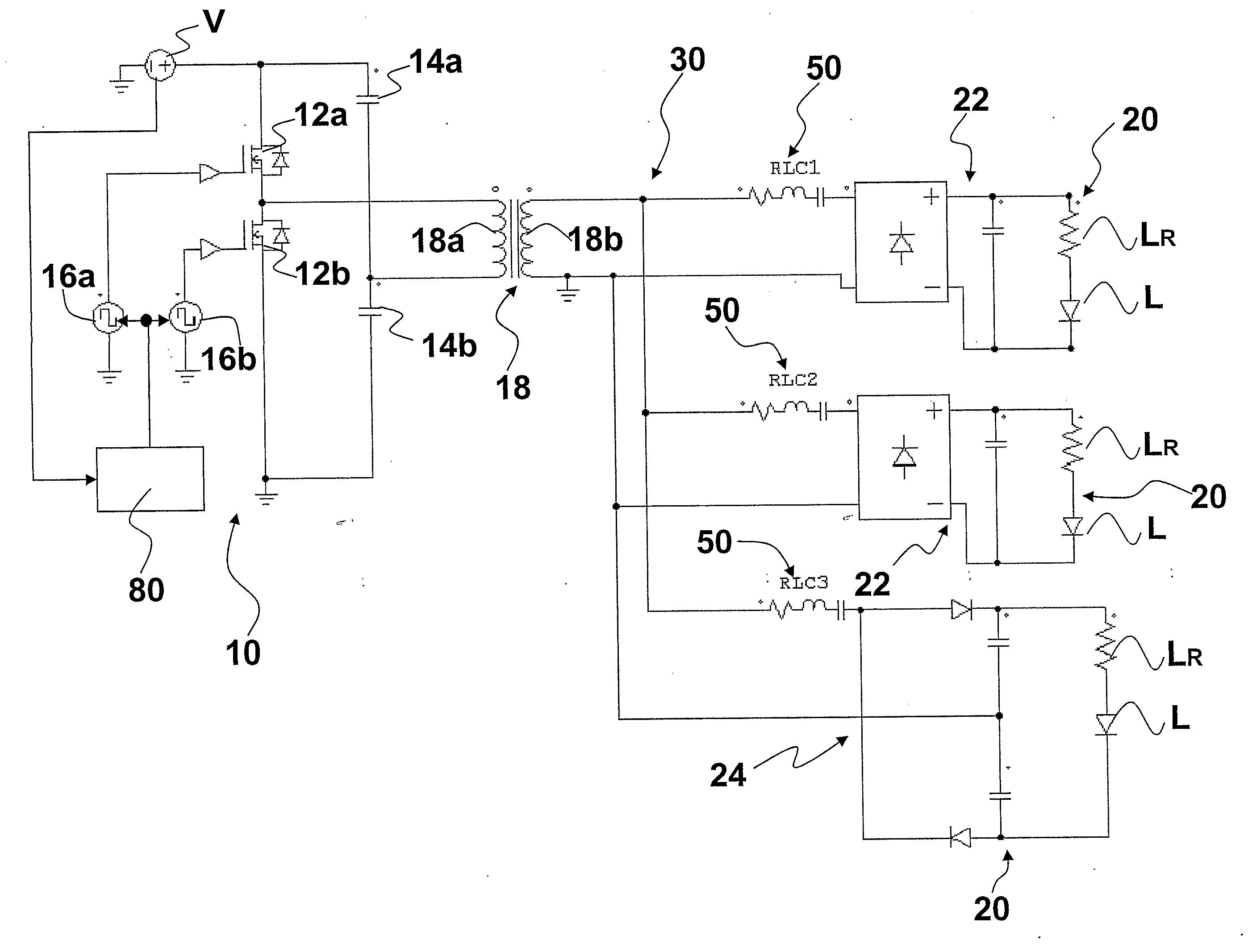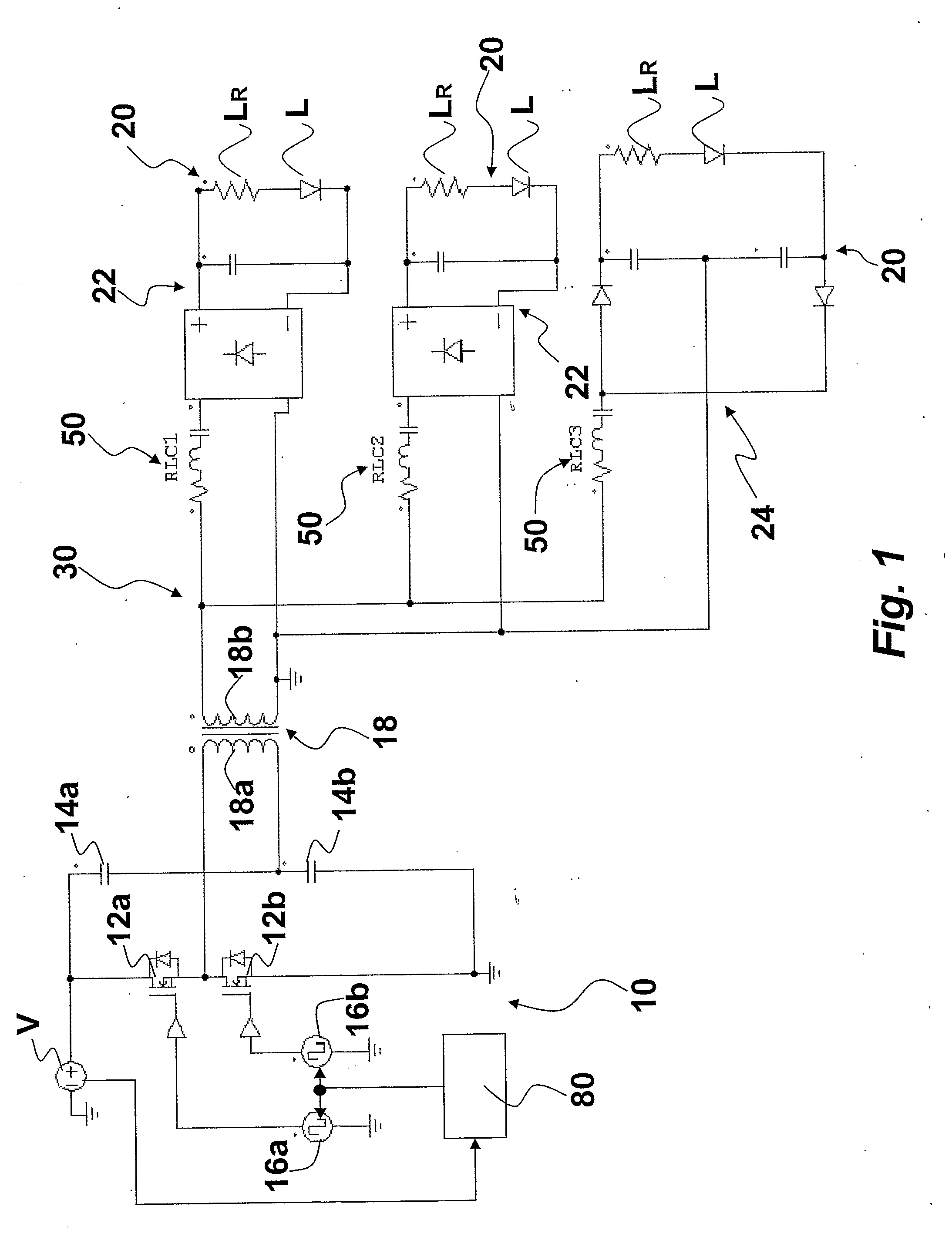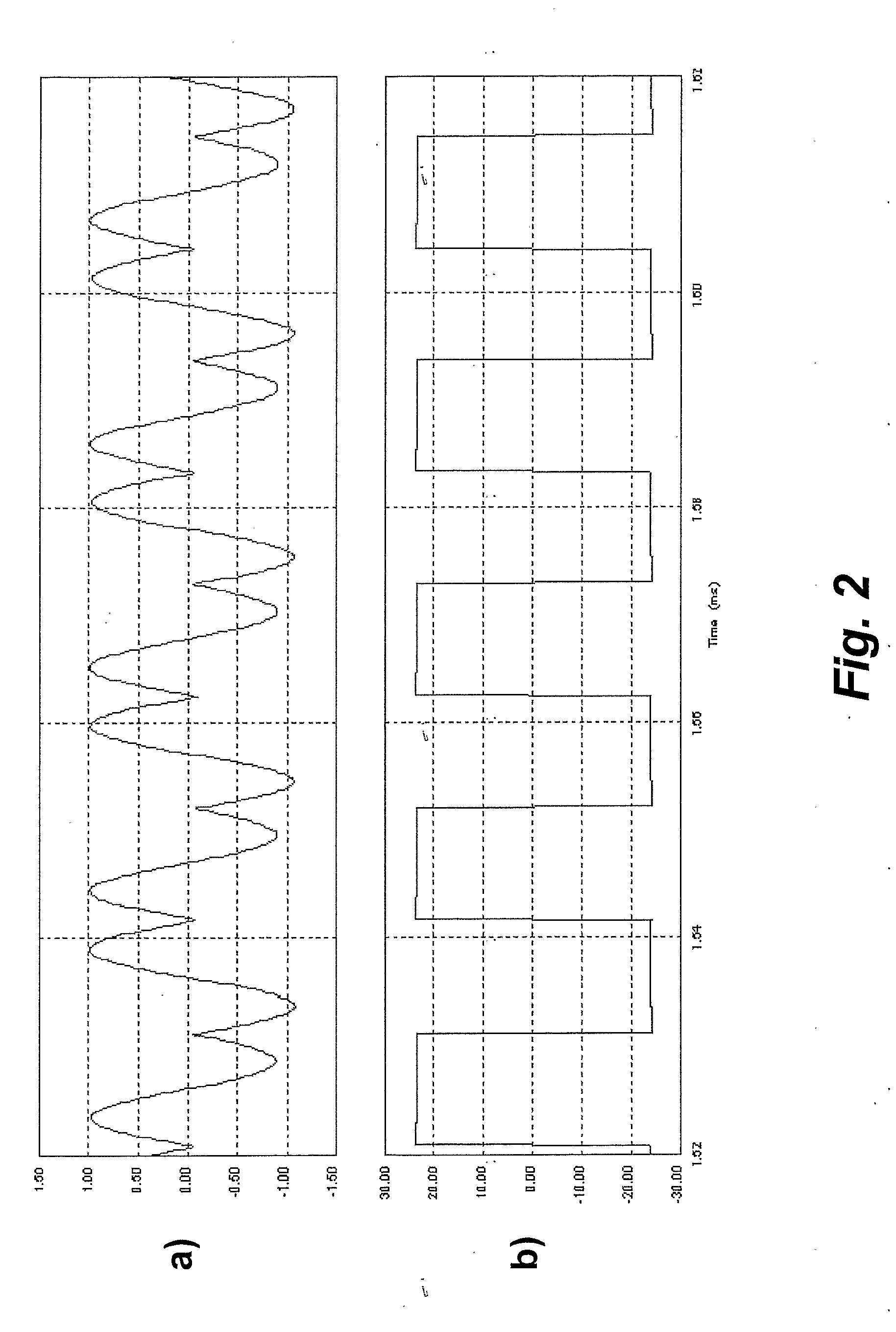Cell Arrangement for Feeding Electrical Loads such as Light Sources, Corresponding Circuit and Design Method
a technology for feeding electrical loads and light sources, applied in the direction of electroluminescent light sources, ac network voltage adjustment, electric lighting sources, etc., can solve the problems of reducing the useful life of light sources, complex solutions that require a current regulator for each cell, and inconvenient production, so as to avoid the presence of hf ripple and simple and inexpensive production
- Summary
- Abstract
- Description
- Claims
- Application Information
AI Technical Summary
Benefits of technology
Problems solved by technology
Method used
Image
Examples
Embodiment Construction
[0029]In general terms, FIGS. 1, 5, and 6 all refer to circuit arrangements including:
[0030]a power source 10, and
[0031]a plurality of cells 20 having associated respective electrical loads here represented by light sources such as semiconductor light sources, e.g. LEDs.
[0032]In the exemplary embodiments described herein, each cell 20 includes one or more light sources. Throughout this exemplary description, LEDs will be considered as exemplary of these light sources. LEDs such as High Flux (HF) LEDs are represented from the electrical viewpoint as the series connection of a diode L and an associated parasitic resistor LR.
[0033]The various LED cells 20 are connected to the power source 10 via a connecting structure 30 which essentially takes the form of a bus-like structure. The circuit arrangement described herein makes it possible to connect to the bus structure 30 several LED cells 20 which may be configured to draw different, fixed current values based on the specific requiremen...
PUM
 Login to View More
Login to View More Abstract
Description
Claims
Application Information
 Login to View More
Login to View More - R&D
- Intellectual Property
- Life Sciences
- Materials
- Tech Scout
- Unparalleled Data Quality
- Higher Quality Content
- 60% Fewer Hallucinations
Browse by: Latest US Patents, China's latest patents, Technical Efficacy Thesaurus, Application Domain, Technology Topic, Popular Technical Reports.
© 2025 PatSnap. All rights reserved.Legal|Privacy policy|Modern Slavery Act Transparency Statement|Sitemap|About US| Contact US: help@patsnap.com



